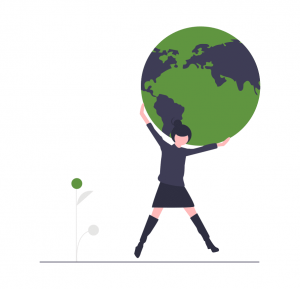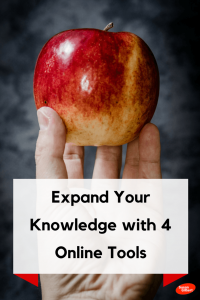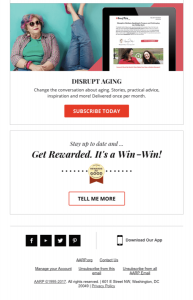How do you convert more leads into loyal customers? Columnist Daniel Faggella offers five strategies to help you maximize your conversion on the back end of your email campaigns.
 Do you ever feel as if you’re doing everything to boost your email engagement, but your prospects just aren’t buying?
Do you ever feel as if you’re doing everything to boost your email engagement, but your prospects just aren’t buying?
Optimizing your inbound marketing regimen for lead generation is no easy task for marketers. Doing so requires creating compelling content that resonates with your target audience, then taking the initiative to promote your content across a myriad of social media channels and web properties. But optimizing the back end — what happens to convert a one-time buyer into a loyal lifetime customer — is an even more special challenge.
For those unfamiliar with the terminology, the front end of the sales funnel is where you convert prospects into first-time customers, whereas the back end of the sales funnel is the part where you take one-time buyers and convert them to longer-term bigger-ticket loyal customers.
As an entrepreneur who bootstrapped an e-commerce business and had to learn from scratch how to optimize the back end sales funnel of what is now a multi-million business, I can tell you that fresh leads are seldom ready to become loyal customers. If you want to increase your sales conversions, then you’ll need to optimize the back end of your email campaigns.
Today, I share five simple strategies that you can use to develop more loyal customers on the back end of your sales funnel.
1. The opt-in offer
Your lead offers should be tailored to a specific problem that your prospects are looking to solve. A fresh lead isn’t looking to spend hours of their time consuming new information from you. In most cases, they are looking to glean educational content that addresses a particular benefit.
This requires you to take a more granular approach to the beginning of your sales funnel. We’ll use the fictitious company, Survival Supplies LLC as an example.
Assume a fresh lead opts in for a free PDF called, “How To Put Up A Dome Tent.” This new prospect probably isn’t looking for an extensive breakdown of the various types of tents that one could use when going camping.
If Survival Supplies LLC sends this lead a 90-page e-book that summarizes the different types of Traditional, A-Frame, Hoop, and Tunnel tents, they’re not delivering on the immediate benefit they initially promised.
A better approach would be if Survival Supplies directed their new subscribers to a short instructional video that demonstrates how to put together a dome tent. As a general rule of thumb, the length of the video should be anywhere between 5 and 10 minutes long. This allows your new subscribers to consume digestible content that is predicated on their specific interests.
By delivering on the tangible benefits that your leads are looking to glean, you will essentially pre-frame them for your core offer.
2. Use testimonials
Testimonials can have a profound impact on the back end of your funnel if they’re leveraged properly. They will provide you with an opportunity to demonstrate social proof with your products and services.
The more testimonials you use in your email sequences, the more established credibility you’ll have with your audience.
The first step to creating an effective testimonial is to understand the core needs and frustrations of your audience. Let’s use a brick-and-mortar boxing facility as an example.
Ben’s Boxing Academy serves middle-aged men in a suburban area. The vast majority of Ben’s students are 40 to 60 years old, and most of them have traditional 9-to-5 desk jobs.
Virtually none of them are looking to explore a career in the sport of competitive boxing. In fact, these men are just looking to lose a few pounds and gain more confidence in their personal endeavors.
When someone subscribes to Ben’s email list, they receive a sequence of autoresponder messages for the first few weeks. The third email is a testimonial from one of their top boxing students:
“My name is Billy. I’m 22 years old and have been training at Ben’s Boxing Academy for the past five years. As an amateur boxer, Ben gives me the hands-on coaching I need to compete at the highest level. My goal is to become a ‘Golden Glove’ boxer by the end of next year.” –Billy Smith, Rhode Island, 22 years old
Although this is an impressive testimonial, it’s not going to resonate with Ben’s audience. In fact, this could intimidate his prospects from coming in and trying a complimentary class.
Let’s take a look at another testimonial that Ben could leverage in his email campaigns:
“Hi, my name is John. On my 40th birthday, I realized that I had let myself go and wanted to lose 20 pounds before summer. Having no prior martial arts experience, the instructors at Ben’s Boxing Academy welcomed me with open arms. After just training a couple of days per week, I ended up losing my beer gut in just a few short months. My wife even told me that she feels much safer around me now!” –John Anderson, Rhode Island, 44 years old
The second testimonial speaks to the underlying benefits that Ben’s students are looking to gain from their experience. If Ben uses this testimonial in his backend email campaigns, it has the potential to drastically increase the chances of a new student visiting his academy.
Once you create alignment with your testimonials, it comes down to utilizing the basics. Obviously, you want your testimonials to be authentic and realistic.
Don’t make any false claims that can potentially hinder the trust of your prospects. Always include the full name, location, and age of the person giving the testimonial. If possible, use an image of your customer as well.
Make sure your testimonials explicitly state the benefits that your customer experienced. One effective way to accentuate the important parts of a testimonial is by highlighting the text in bold and italics.
3. Nail your tripwire offer
A “tripwire” product is typically a low-barrier product that solves a specific issue with which a segment of your audience is dealing. The primary objective of this product is to convert your prospects into paying customers. Therefore, a tripwire is generally offered towards the beginning of your sales funnel.
You might have heard of the old marketing adage, “20 percent of your customers will account for 80 percent of your revenue.” What you might not know is that much of that 80 percent will likely be generated from the back end of your sales funnel.
Therefore, it’s paramount to over-deliver on your buyer’s first experience with you. Solving pertinent problems and delivering value will garner the trust of your new customers. As a result, they will view you as an authority in the niche and will inevitably invest more in your products and services.
A tripwire product should offer explicitly attractive benefits that make the buying process irresistible to your prospects.
In my experience, the price of your tripwire offer should be around 1 percent to 10 percent of the standard value. For instance, if your flagship product normally costs $300, your tripwire should range anywhere between $3 to $30.
A low-ticket, low-risk tripwire product will immediately convert your prospects into customers. The lower you drop the price, the higher your conversion rates will be.
If your tripwire offer converts, then a percentage of your new customers will consider purchasing the next offer in your sales funnel.
4. Harness the power of upsells
If you want to optimize the back end of your sales funnel, then you’ll want to harness the power of upsells. A customer’s interest levels are piqued when they purchase one of your products. This is the perfect opportunity to offer them additional products that provide ancillary benefits to your tripwire offer.
The key is to make upsells relevant to the content in your initial offer. If you present an arbitrary product that doesn’t expand on the benefits of your core offer, then don’t expect to have a conversion rate worth bragging about.
On the contrary, a logical upsell that builds on the curriculum of your tripwire product can increase your conversion rate.
To maximize your conversion on the back end of your sales funnel, make your upsells as seamless as possible for your customers. Ideally, you should offer “One-Click Upsells” that don’t force your buyers to put in their credit card information over and over again.
Always be sensitive about the price and offer payment plans for higher-ticket items in your funnel. Not everyone is loaded with cash, so you’ll want to know the demographics of your target audience before you upsell them.
5. Feed the social machine
The back end of your sales funnel will generate the vast majority of your profits; however, you’ll also want to craft your emails to cross-pollinate your other social channels and web properties. This will ultimately increase the overall engagement of your email list and position you as an authority in your industry.
One way to do this is by sending out an email newsletter whenever you create a blog post. Your articles should provide educational content that’s conducive to the specific needs of your audience.
By including passive calls-to-action in your body copy and sidebars, you can always present your readers with an opportunity to purchase one of your products.
You also want to encourage your email subscribers to share your content on a multitude of social media channels. There are numerous ways to do this, including:
- Placing social media icons at the footer of your emails;
- Using social buttons on your blog;
- Direct your email list to a particular social media channel once per week.
Cross-promoting your email list and social media channels will constantly put your brand in front of new audiences. This will help you create multiple streams of traffic sources to your products and services.
Wrap-up
The above five steps will help you optimize the back end of your sales funnel. Contrary to popular belief, you don’t need mass volumes of traffic to optimize your back end.
The key is creating a high-converting funnel so that your customer cost per acquisition (CPA) is always lower than your customer lifetime value. When you reach this point, scaling your small business becomes much more feasible.
Some opinions expressed in this article may be those of a guest author and not necessarily Marketing Land. Staff authors are listed here.
Marketing Land – Internet Marketing News, Strategies & Tips
(107)
Report Post








